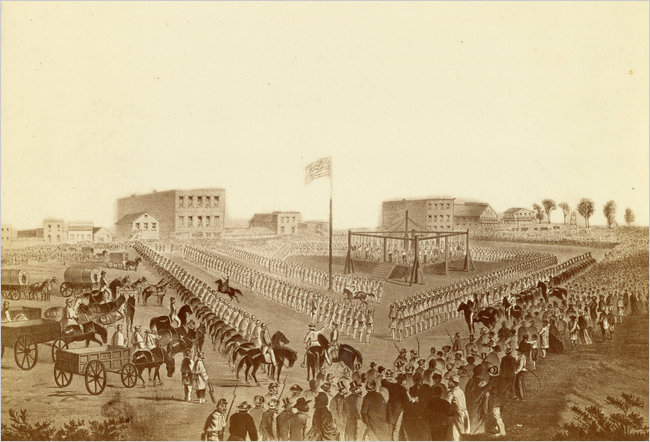Minnesota is divided on how best to commemorate the U.S.-Dakota War, which left hundreds dead and ended in the largest mass execution in U.S. history.
By Curt Brown
Some say it should be burned, buried or returned to the hands of the Dakota people.
Others argue it should be displayed, like piles of shoes at Holocaust museums, as a powerful artifact to help people confront the grim story of the U.S.-Dakota War, which erupted in Minnesota in 1862 and ended with the largest mass execution in U.S. history.
The noose, and just what to make of it, is one sign of the historical reckoning looming this year as Minnesotans wrestle with how to mark the 150th anniversary of one its ugliest, yet often overlooked, episodes.
"This will be a very challenging year--the wounds are still deep," said Republican state Rep. Dean Urdahl, a longtime history teacher whose Grove City home is three miles from where the war broke out. His great-great-grandfather buried some of its first victims. "It was our state's greatest tragedy."
Dozens of commemorative events are planned, from a major exhibit at the Minnesota History Center to programs in classrooms across the state and cellphone tours along the Minnesota River, where the war raged for six weeks. Yet, in the shadow of it all are deep rifts over how to best observe the war's sesquicentennial.


No comments:
Post a Comment